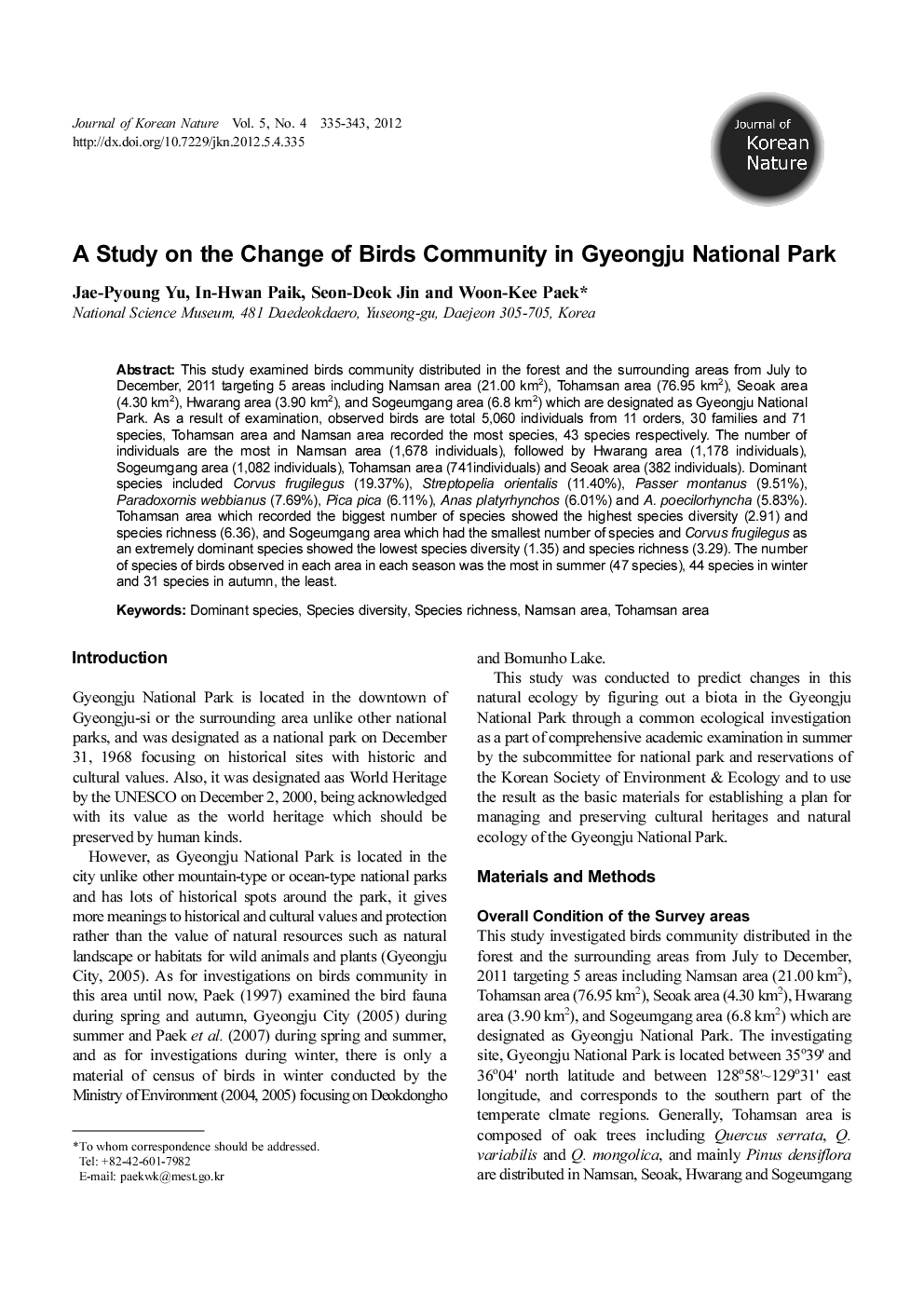| Article ID | Journal | Published Year | Pages | File Type |
|---|---|---|---|---|
| 4399521 | Journal of Korean Nature | 2012 | 9 Pages |
This study examined birds community distributed in the forest and the surrounding areas from July to December, 2011 targeting 5 areas including Namsan area (21.00 km2), Tohamsan area (76.95 km2), Seoak area (4.30 km2), Hwarang area (3.90 km2), and Sogeumgang area (6.8 km2) which are designated as Gyeongju National Park. As a result of examination, observed birds are total 5,060 individuals from 11 orders, 30 families and 71 species, Tohamsan area and Namsan area recorded the most species, 43 species respectively. The number of individuals are the most in Namsan area (1,678 individuals), followed by Hwarang area (1,178 individuals), Sogeumgang area (1,082 individuals), Tohamsan area (741individuals) and Seoak area (382 individuals). Dominant species included Corvus frugilegus (19.37%), Streptopelia orientalis (11.40%), Passer montanus (9.51%), Paradoxornis webbianus (7.69%), Pica pica (6.11%), Anas platyrhynchos (6.01%) and A. poecilorhyncha (5.83%). Tohamsan area which recorded the biggest number of species showed the highest species diversity (2.91) and species richness (6.36), and Sogeumgang area which had the smallest number of species and Corvus frugilegus as an extremely dominant species showed the lowest species diversity (1.35) and species richness (3.29). The number of species of birds observed in each area in each season was the most in summer (47 species), 44 species in winter and 31 species in autumn, the least.
